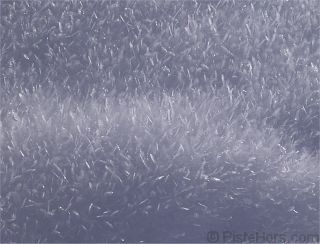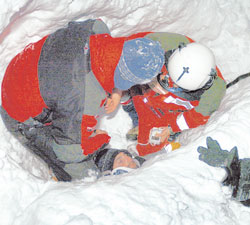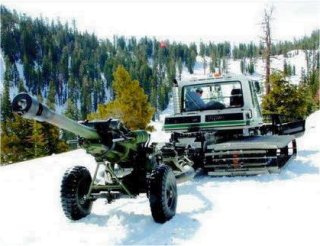
The 2004 edition of the biennial International Snow Science Workshop is upon us. This event, held over 6 days in Jackson Hole, Utah, reunites leading experts in the field of avalanche research. The conference organisers received over 130 papers, of which 63 have been selected as main presentations and 70 others will be poster presentations. The event attracts snow scientists and avalanche practitioners from many countries, as well as a strong presence from North American backcountry enthusiasts.
The papers cover a wide range of avalanche related topics. Naturally as backcountry skiers we’ve focussed on some of the papers relating directly to our sport.

Surface Hoar
Surface hoar and faceted snow are a factor in weak layers that can cause avalanches. A paper by Cooperstein, Hansen and Birkeland looks at the affects of slope aspect on their formation. Backcountry skiers know that statistically, in the northern hemisphere, that north to north-east aspects are most likely to avalanche. Although the researchers not analyzed all the data initial results suggest a statistically significant relationship in the formation of surface hoar and near-surface faceted crystals based on slope aspect. Their results indicate that near-surface faceted crystals develop more frequently on south facing slopes, while surface hoar crystals seem to grow larger on north aspects.
A number of papers look at avalanche search and rescue. An analysis of over 100 mountain guides in a multiple burial situation shows that, in common with experts in other fields, guides seem to overestimate their abilities. It also highlights the importance of a systematic approach to searching, the need to balance speed with precision and the ability to continually reassess the situation during the search.
Given the shortcomings with existing search systems the Norwegian researcher Christian Jaedicke has evaluated commercial 900 MHz Ground Penetrating Radar for searching for avalanche victims. Ground Penetrating Radar has been used successfully in Scandinavian countries for locating avalanche victims. However the equipment is bulky, it must be transported on a sledge and pulled by snowmobile. Jaedicke feels these problems must be tackled before its more widespread use.
If an avalanche victim survives the initial 45 minutes of burial in an avalanche, death is usually caused by hypothermia. A paper by LDS Hospital in Salt Lake City notes that historic data suggests a core body temperature cooling rate of the order of 3 °C per hour between burial and arrival at hospital. One problem facing rescuers at the scene is in resuscitating victims without causing a critical drop in core temperature. The LDS research found a cooling rate of 1.3C per hour while victims were buried which implies that victims under snow do not become hypothermic as rapidly as was thought. The coolng rate increases during and immediately after extraction contributing to hypothermia.

On the nivological side Bruce Jamieson and Paul Langevin look at the formation and evolution of poorly bonded crusts. A number of slab avalanches are reported to release on crusts. Studies in Canada show that faceted crystals are a contributory factor for avalanches that release over a week after burial. Many of these faceted layers are extremely thin and difficult to observe in snow profiles. Their study found faceting of dry snow over a wet layer within a single day with a great deal of spatial variability on the slope.
Ian McCammon looks at the lessons that can be drawn by avalanche educators from safety campaigns. He highlights that these often have modest impact and can even worsen problems. Ian is joined by Dale Atkins for a second session looking at the differences between experts and recreationalists when designing education programs. The study found that both types of user made similar observations in ranking signs of instability and stability but recreationalists seemed to be more regularly confused about the importance of the obvious signs. Finally McCammon and Pacal Hägeli examine the application of avalanche decision frameworks to North American data. Although many of these frameworks originated in Europe with different snowpacks there has been growing interest in how well these frameworks might work in North America. The paper evaluates four popular European decision-making frameworks (the 3x3 Reduction Method, the NivoTest, Stop-or-Go, and the SnowCard FaktorenCheck) against 33 years of avalanche accident data in the United States. The study finds that all four methods would have reduced avalanche deaths but with varying thresholds concerning avalanche climate and slab conditions. An important finding of this study relates to the quantitative risk reduction provided by prudent spacing between party members and the use of islands of safety.
In the wake of the Durrand Glacier which killed seven skiers including extreme snowboarder Craig Kelly there is a paper by David McClung and Harpa Grímsdóttir looking at avalanche risk management in backcountry ski operations. The researchers use heliski operators Canadian Mountain Holidays Snowbase database. One finding, something long suspected by researchers, is that slope aspect is a less significant factor in avalanche risk assessment than statistics would suggest as the slopes aspects with most avalanches are also the most skied. The study also found that when selecting routes, professional mountain guides were less likely to examine slide history and inclination than shape and size of terrain. The possibility of using rules-based approaches in Canadian guiding operations was examined but the study decided that these were not appropriate and that guides could make better decisions based on experience.
Roger Atkins, a professional helicopter guide presents an avalanche characterization checklist for backcountry travel decisions. The intent of the checklist is to better express snowpack instability concerns in a systematic way that is meaningful for backcountry risk management. Atkins takes a practitioner’s viewpoint and says that there is less uncertainty about the type of avalanches likely to occur than about the probability of triggering avalanches and thinks that assessing the character of possible avalanches is even more relevant than assessing the ease of triggering avalanches when managing the risk of travel in backcountry terrain. Atkins checklist separates separates avalanche activity into different regimes, and potential for avalanches in each regime is then assessed. An example of an avalanche regime is: Surface Wind Slabs Near Ridgetops.

The US Forest Service permitted skiing on the public lands they manage in 1938. Doug Abromeit looks at avalanche control on this land and in particular the use of US military artillery, in particular the 106mm recoilless rifle accidents at Alpine Meadows and Mammoth Mountain and the future of artillery in avalanche control.
The Eastern United States is the capital of snowmaking. The canons are started as soon as the weather turns cold enough. So much snow is made that people have joked about the avalanche risk this poses. Roger H Damon, Jr. looks at real avalanches caused by man made snow. The presentation looks at the snow making process and how this snow interacts with real snow’s metamorphism. There is a look at the injuries and property damage caused by man-made snow with photographs and statistical information about the side of avalanches, slope angles and reasons for the product’s failure.
A full program can be found on the website: http://www.issw.net/